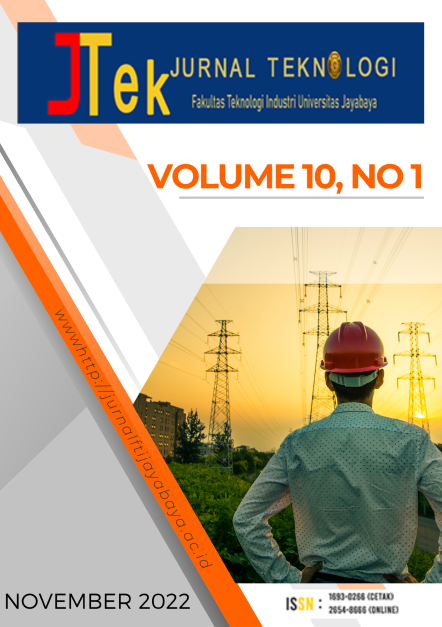Deep Learning - Prediksi dan Resiko Investasi Enam Saham Bank di Indonesia
DOI:
https://doi.org/10.31479/jtek.v10i1.194Abstract
Stock prediction and risk level are important for investors, but this ability can only be done by experts and takes a long time. The rapid development of technology today demands that decisions be made quickly and precisely. Deep Learning (DL) is one of the Artificial Intelligence (AI) methods that are able to analyze and predict stock values accurately, in real-time, and without much human intervention. Analysis of risk and correlation between stocks by calculating daily returns using the moving average (MA) method. Dataset of 6 bank shares obtained from yahoo-finance, namely Bank Central Asia (BBCA), Bank Rakyat Indonesia (BBRI), Bank Mandiri (BMRI), Bank Nasional Indonesia (BBNI), Bank Rakyat Indonesia Syariah (BRIS), and Bank Tabungan Negara (BBTN). The volume of share sales increased significantly only in BBRI and BBNI shares, although 5 bank shares (except BRIS) experienced price increases. The highest correlation occurred between BBNI and BMRI shares with a value of 97%, 92% between BMRI and BBCA shares, and 91% between BBNI and BBCA. Analysis of risk and expected return shows that BRIS has the highest risk and expected return of 0.042245 and 0.002986, respectively. BBCA shares have the lowest risk and expected return at 0.015392 and 0.000695, respectively. The results show that future predictions have decreased, namely BBRI, BBNI, and BBTN, and rose for BBCA, BMRI, and BRIS stocks.Downloads
References
E. Tandelilin, Portofolio dan Investasi Teori dan Aplikasi, Pertama. Kanisius
Yogyakarta, 2010.
C. P. Jones, Investment Analysis and Management, 9th ed. Newyork: John Wiley and
Sons, 2004.
H. Jogiyanto, Teori Portofolio dan Analisis Investasi, Pertama. yogyakarta: Penerbit
BPFE, 2013.
N. L. P. I. Ariasih and I. K. Mustanda, “Pembentukan Portofolio Optimal Menggunakan
Model Indeks Tunggal pada Saham Indeks LQ-45,” E-Jurnal Akunt. Univ. Udayana,
pp. 1–30, 2018.
Lemiyana, “Analisis Model CAPM dan APT Dalam Memprediksi Tingkat Return
Saham Syariah (Studi kasus Saham di Jakarta Islamic Index ),” I-Finance, vol. 1, no. 1,
pp. 1–20, 2015, [Online]. Available: http://jurnal.radenfatah.ac.id/index.php/I-
Finance/article/view/304
D. A. dan E. S. M. Adhitio Satyo Bayangkari Karno, Widi Hastomo, “Optimasi
Portofolio Dan Prediksi Cryptocurrency Menggunakan Deep Learning Dalam Bahasa
Python,” Pros. SeNTIK, vol. 4, no. 1, pp. 193–202, 2020, [Online]. Available:
https://ejournal.jak-stik.ac.id/index.php/sentik/issue/view/56
E. S. Robert Pius Pardede, “Analisis Portofolio Optimum Saham Ditinjau Dari Expected
Return dan Risk Penalty Berdasarkan Model Markowitz Studi Kasus Pada Industri
Telekomunikasi,” J. Ilm. Kesatuan, vol. 9, no. 2, 2007.
A. Satyo, B. Karno, W. Hastomo, I. Sari, K. Wardhana, and D. Arif, “29 Jenis Penyakit
Tanaman Menggunakan Deep Learning EfficientNetB3 Identifikasi,” Insearch Inf. Syst.
Res. J., vol. 2, no. 2, pp. 35–45, 2022.
S. Hochreiter and J. Schmidhuber, “Long Short-Term Memory,” Neural Comput., vol.
, no. 8, pp. 1735–1780, 1997, doi: 10.1162/neco.1997.9.8.1735.
J. Brownlee, “How to Develop LSTM Models for Time Series Forecasting,” 2020.
https://machinelearningmastery.com/how-to-develop-lstm-models-for-time-series-
forecasting/ (accessed Sep. 09, 2022).
M. B. dan S. Romney, Accounting Information System, 9th ed. Pearson Education
Limited, 2015
Downloads
Published
Issue
Section
License
The rights of publication and use of intellectual works in this journal are the full property of the publisher, while the moral rights belong to the author.
The formal legal aspects of access and utilization of each Journal of Technology articles are subjected to the Creative Commons Attribution-Share Alike (CC BY-SA) license, which means that journal content can be used freely and fairly (fair use) in a similar form even for commercial purposes.
To avoid malpractice and plagiarism in publication of article publishing, the author is asked to fill out and sign a copyright statement on the Declaration of Authenticity of the Manuscript and Copyright Transfer.






